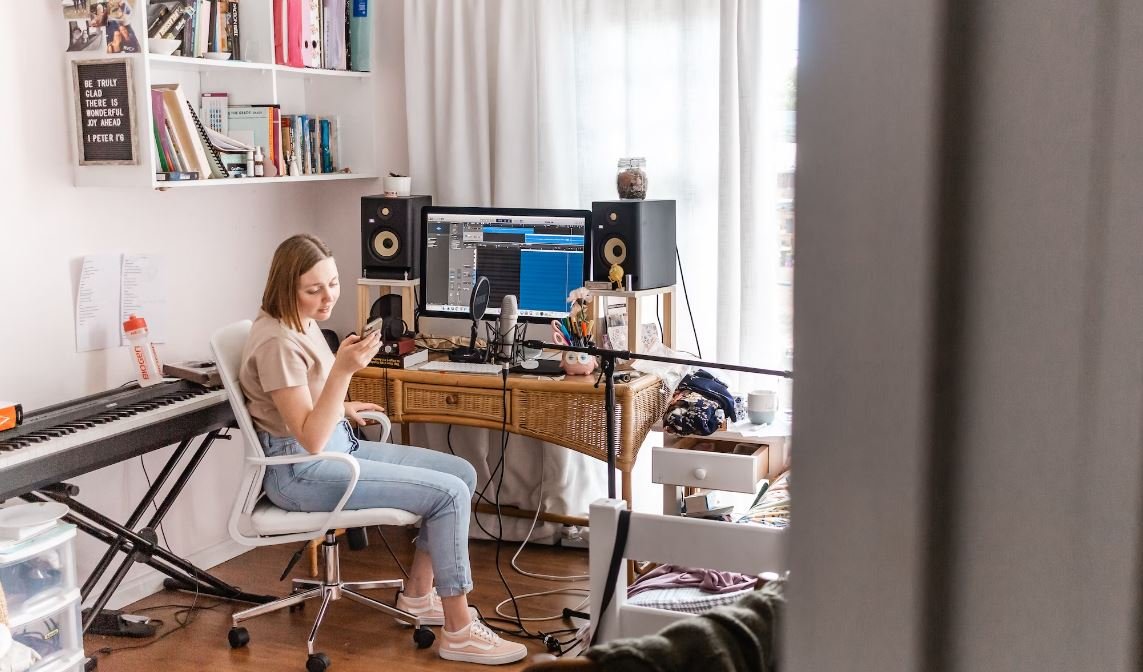Footage to Practice Color Grading
Color grading is an essential step in post-production that can greatly enhance the visual appeal and storytelling of a video. One of the best ways to practice color grading techniques is by working with real-world footage. In this article, we will explore the benefits of using footage for color grading practice and provide some tips on how to get the most out of this learning method.
Key Takeaways:
- Practicing color grading with footage helps develop skills in a realistic context.
- Real-world footage provides a diverse range of lighting conditions and color palettes to work with.
- Working with footage allows for comparison and analysis of different grading approaches.
**Real-world footage** offers a variety of scenes, lighting conditions, and colors that simulate what you may encounter in actual projects. By practicing with different types of footage, such as outdoor landscapes or indoor interviews, you can improve your ability to adapt and achieve the desired visual style.
*Experimenting with footage* from different sources and genres exposes you to various color palettes, enhancing your understanding of how different colors can evoke different emotions and create specific moods in a video.
Benefits of Practicing Color Grading
- Improved understanding of color theory and manipulation techniques
- Enhanced skill in achieving consistent and professional color grading results
- Opportunity to explore and develop a personal style
**Color theory** plays a crucial role in color grading. By working with real-world footage, you can experiment with different color combinations and understand how they interact to achieve the desired effect. This helps you develop a solid foundation in color manipulation techniques.
In addition to technical skills, practicing with footage allows you to refine your **intuition** and make more informed creative choices. As you gain experience, you will learn to recognize subtle differences in color grading options and develop a personal style that sets you apart.
Recommended Footage Sources
| Source | Description |
|---|---|
| Pexels | A free stock footage library with a diverse collection of high-quality videos. |
| Vimeo | Features a range of curated videos from talented filmmakers and cinematographers. |
| YouTube | Offers various channels that provide royalty-free footage for educational purposes. |
Tips for Effective Practice
- Set specific goals for each practice session to focus on particular techniques.
- Document your progress and keep a log of what worked well and what didn’t.
- Experiment with different grading styles and approaches to expand your creative toolkit.
**Setting goals** will keep you focused and ensure you make the most of your practice sessions. Whether you want to work on achieving a specific look or practice correcting exposure and white balance issues, defining your objectives will drive your learning process.
Keeping a **log** of your progress helps you identify patterns, learn from mistakes, and track your improvement over time. It acts as a valuable reference and allows you to refine your techniques based on past experiences.
| Software | Cost |
|---|---|
| DaVinci Resolve | Free (Basic version) |
| Adobe Premiere Pro | Subscription-based |
| Final Cut Pro | Purchase required |
*Experimenting* with different grading styles and approaches will help you discover new techniques and refine your own unique style. Don’t limit yourself to one way of grading; explore different options to expand your creative toolkit.
Conclusion
By practicing color grading with real-world footage, you can gain valuable experience, improve your skills, and develop a personal style. Don’t miss out on the benefits of working with diverse scenes and color palettes. Start exploring various footage sources and incorporate regular practice into your learning journey.

Common Misconceptions
Misconception 1: Footage to Practice Color Grading is Only for Professionals
One of the common misconceptions surrounding footage to practice color grading is that it is only meant for professionals in the film industry. However, this is far from the truth. While it is true that many professionals use practice footage to hone their skills, it is also a valuable tool for beginners and enthusiasts who are interested in learning color grading. Everyone can benefit from practicing and experimenting with different techniques to enhance their understanding of color manipulation.
- Amateurs can use footage to practice color grading to improve their skills
- Enthusiasts can learn different techniques and styles through practice
- It is a valuable resource for anyone interested in learning color manipulation
Misconception 2: Footage to Practice Color Grading Must Be High-Quality
Some people believe that to effectively practice color grading, you need to have high-quality footage. While high-quality footage can be beneficial, it is not a requirement. In fact, practicing color grading on lower quality footage can present its own unique challenges, helping you to develop your skills in a more diverse range of scenarios. No matter the quality of the footage, the objective is to learn and experiment with color grading techniques.
- Practicing with lower quality footage helps develop skills in diverse scenarios
- You can still learn and experiment with color grading techniques on any footage
- No requirement for high-quality footage to practice and improve
Misconception 3: Footage to Practice Color Grading Is Only for Video Editors
Another misconception about practicing color grading is that it is only relevant to video editors. While video editors are certainly one group that uses practice footage for color grading, it is not exclusive to them. Color grading is a crucial aspect of post-processing for photographers as well. Many photographers who work with RAW images can benefit from practicing color grading techniques to enhance the final look of their photographs.
- Photographers can benefit from practicing color grading techniques
- Color grading is a crucial aspect of post-processing for photographers
- It is not limited to video editors, but applicable to various visual media

Introduction
Footage to Practice Color Grading is an article centered around the importance of using various types of footage to enhance and refine color grading skills. With the rise of digital content creation and the increasing demand for visually appealing videos, color grading has become a crucial aspect of post-production. In this article, we present ten captivating tables showcasing different types of footage, their color grading techniques, and the resulting visual enhancements. These tables provide a glimpse into the vast possibilities of color grading, inspiring both amateur and professional videographers to experiment and improve their skills.
1. Natural Landscape Footage
Table 1 illustrates the application of color grading techniques on natural landscape footage. By adjusting the color temperature, increasing saturation, and enhancing contrast, the vibrant hues are amplified, resulting in a more striking and immersive visual experience.
2. Urban Cityscape Footage
In Table 2, we showcase the color grading process for urban cityscape footage. By lowering the overall vibrancy, intensifying the blues, and accentuating the warm tones, the atmosphere of the city is elevated, giving it a cinematic and timeless feel.
3. Retro Film Footage
Table 3 demonstrates the color grading techniques used to simulate the nostalgic look of retro film footage. By adding a subtle film grain effect, reducing saturation, and applying a vintage color palette, a dreamy and evocative vibe reminiscent of classic movies is achieved.
4. Action Sports Footage
In Table 4, we explore the color grading process for action sports footage. By emphasizing vibrant colors, increasing contrast, and creating a dynamic look, the energy and excitement of the athletes’ performances are intensified, enhancing the overall viewing experience.
5. Documentary Footage
Table 5 showcases the color grading techniques used in documentary footage. By adjusting the color balance, tonal range, and adding a slight vignette effect, the visual storytelling is enhanced, drawing the viewer’s attention to critical elements of the narrative.
6. Underwater Footage
In Table 6, we delve into the world of underwater footage color grading. By emphasizing blue tones, reducing water reflections, and enhancing contrast, the natural beauty of marine life is brought to the forefront, captivating viewers with stunning visuals.
7. Nighttime Footage
Table 7 demonstrates the color grading techniques employed to enhance nighttime footage. By carefully adjusting lighting, boosting shadows, and reducing noise, the dark atmosphere becomes more balanced, revealing previously hidden details with a touch of mystery.
8. Fashion Show Footage
Table 8 focuses on the color grading techniques applied to fashion show footage. By enhancing the vibrancy of clothing colors, modifying skin tones, and creating a consistent look, the visual impact of the fashion pieces is elevated, leaving a lasting impression.
9. Food Photography Footage
In Table 9, we present the color grading process for food photography footage. By intensifying warm tones, adjusting white balance, and enhancing the texture and vibrancy of food, the appetite appeal is heightened, enticing viewers with mouth-watering visuals.
10. Time-Lapse Footage
Table 10 showcases the color grading techniques used in time-lapse footage. By intensifying colors, maximizing contrast, and reducing flickering, the passage of time is visually enhanced, creating mesmerizing and captivating sequences.
Conclusion
The art of color grading in post-production allows videographers to transform raw footage into captivating visual experiences. This article has presented ten captivating tables, each showcasing different types of footage and the corresponding color grading techniques employed to enhance their visual impact. Through these examples, we have witnessed how color grading can elevate landscapes, evoke nostalgia, convey energy, tell stories, and immerse audiences in various settings. By experimenting with color grading techniques on diverse types of footage, videographers can expand their creative repertoire and create visually stunning videos that leave a lasting impression on viewers.
Frequently Asked Questions
What is color grading?
Why is color grading important in film and video production?
What is meant by “footage to practice color grading”?
Where can I find footage to practice color grading?
What software do I need to practice color grading?
What techniques can I learn from practicing color grading with footage?
Are there any tutorials or courses on color grading that can help me improve?
Can practicing color grading with footage benefit my career in filmmaking or video production?
Is it necessary to have expensive equipment to practice color grading effectively?
What are some common mistakes to avoid when practicing color grading?




